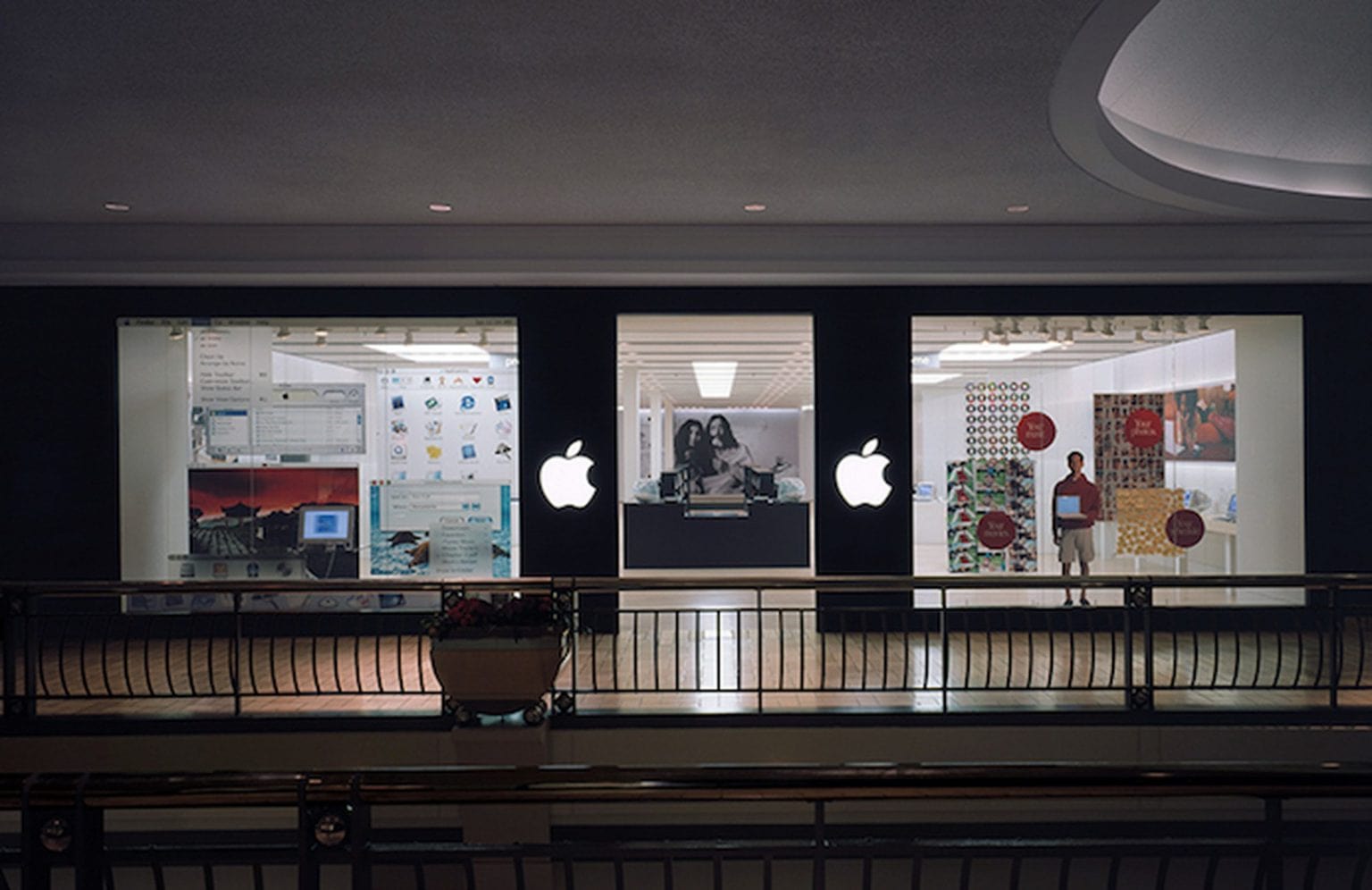 May 19, 2001: Apple revolutionizes the world of computer shopping by opening its first two Apple Stores. Located in Tysons Corner, Virginia, and Glendale, California, the new outlets represent the culmination of a long-term dream for Apple.
May 19, 2001: Apple revolutionizes the world of computer shopping by opening its first two Apple Stores. Located in Tysons Corner, Virginia, and Glendale, California, the new outlets represent the culmination of a long-term dream for Apple.
A couple of decades later, Apple will expand its retail operations to include 525 stores in 26 countries and regions around the world. Like virtually every other brick-and-mortar store, they will face challenges during the COVID-19 pandemic that started in 2020. However, they remain some of the most profitable retail outlets anywhere on a dollars-per-square-foot basis.
Apple Stores think different about retail
Apple co-founder Steve Jobs had help creating the Apple Store concept. But it was undoubtedly a Jobs-led initiative. When he returned to Apple in 1996, he laid out two initiatives: setting up Apple’s online store, and establishing a string of outposts inside CompUSA shops around the United States. The idea was to revolutionize the way people bought Apple products.
The CompUSA experiment served as a prototype for the Apple retail stores that followed. Inside a dedicated section of each CompUSA store, Apple-trained employees helped customers connect with Cupertino’s products.
As with so much of what Jobs did, the idea was to give Apple control — not just over which products it sold and the hardware/software combination, but also how they were sold.
CompUSA and the birth of the Apple Store
However, the initial CompUSA “store within a store” didn’t work as well as it could have. Apple could dictate the way its products got displayed and demoed to consumers. But the mini-stores were frequently located at the back of CompUSA outlets, and they didn’t get much in the way of foot traffic.
As a result, Apple went back to the drawing board and came up with the Apple Store concept. Based on Jobs’ love of high-end outlets that focused on “big ticket” items rather than bulk sales, the approach proved very different from other electronics retailers. The most popular way of selling computers at the time largely focused on big, warehouse-type outlets, usually located outside of busy downtown areas.
Customer service at these types of computer stores often proved poor. However, they offered everything in bulk — and at low cost. Nothing about that description sounded appealing to Apple.
A giant Apple product
The Apple Store countered that strip-mall approach with a sleek architectural design that made it feel almost like a giant Apple product. Much like high-end fashion boutiques, the stores showed off just a few choice products to tantalize customers.
“The Apple stores offer an amazing new way to buy a computer,” Jobs said in a 2001 press release announcing the opening of the company’s first stores. “Rather than just hear about megahertz and megabytes, customers can now learn and experience the things they can actually do with a computer, like make movies, burn custom music CDs, and publish their digital photos on a personal website.”
It was a total reimagining of what a computer store could, and should, be. When Fry’s Electronics shut down in 2021, I wrote that the Apple Store helped kill the quirky computer retailer. I didn’t mean this literally, and it’s impossible to ignore the effect of e-commerce on cheaper, warehouse-style stores. But nonetheless, the Apple Store changed how a lot of people viewed a shop that sold technology.
To help realize his vision, Jobs worked closely with Ron Johnson, former vice president of merchandising at Target, to design the perfect user experience. They came up with concepts like the Genius Bar, a product demo theater and internet-connected computers so customers could just hang out and check email or their favorite websites.
Jobs also worked with pioneering American architect Art Gensler, who founded the world’s largest architectural firm. Gensler, who died in 2021, played an early role in shaping the architectural look of early Apple Stores — until his firm was fired for working on Microsoft stores.
Apple’s direct sales channel to customers
To this day, Apple Stores continue to go from strength to strength. The person in charge has changed over the years, and Apple sells more products than it once did.
But the Apple Store achieved what it set out to do. It gave Apple total control over the retail experience. As the below tweet from Above Avalon analyst Neil Cybart shows, Apple’s vertically integrated direct sales strategy became an overwhelming success for the company.
The Apple Store obviously serves as a distribution hub. But, perhaps more importantly, it works as an educational channel for people to find out about Apple and its products.
Along with Apple’s design-led culture and vertical integration strategy, the company’s direct retail operations have played a vital role in its success.
As Apple's ecosystem continues to expand, a growing percentage of revenue is driven via Apple's direct distribution channel. pic.twitter.com/J7HO91b3ag
— Neil Cybart (@neilcybart) May 19, 2021
What’s your earliest memory of the Apple Store? Let us know your thoughts in the comments below.


